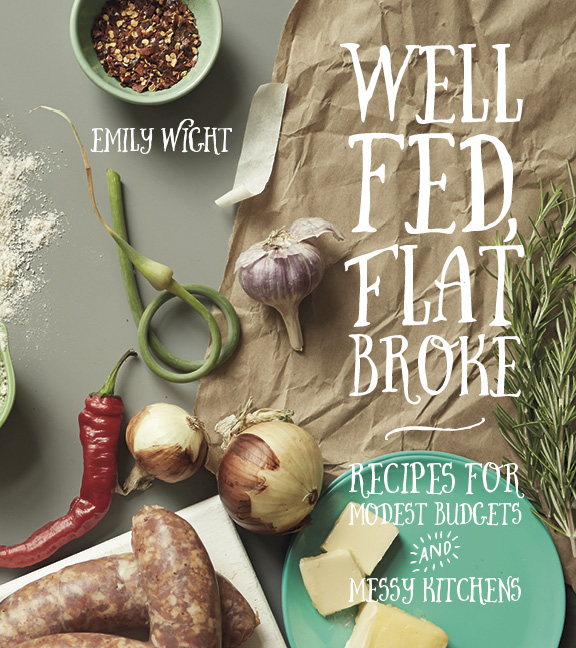TORONTO — Emily Wight insists you don’t have to break the bank to eat well.
Her new cookbook, “Well Fed, Flat Broke: Recipes for Modest Budgets and Messy Kitchens” (Arsenal Pulp Press), stems from a blog she began writing after graduating from university.
“It was the perfect subject matter for the times,” Wight says.
“Student loans were about to become payable and I was still just getting into full-time work… It seems to appeal to people because a lot of us are in the same boat. You don’t want to sacrifice taste and you want to look forward to your meals, but on the other hand, you’ve got your rent to pay, your daycare to pay and it’s expensive.”
Now the 32-year-old is balancing a career in communications at the University of British Columbia and motherhood, with toddler Hunter, who will be four in November. But she eked out enough time to write her book, with tips and recipes gleaned from years of frugality.
“You don’t have to have expensive ingredients to make a satisfying meal. I find I can make a perfectly delicious pasta sauce with canned tomatoes that are the no-name brand, so you don’t feel you have to go out and buy the most expensive thing in order for it to be good,” she says from Vancouver.
“You can have delicious and luxurious and satisfying meals on a budget.”
To control her spending, her food budget has its own bank account.
She reads flyers and shops at stores that offer mobile apps.
“They make it really easy and convenient to use their coupons and stretch your dollar a little further with points programs.”
She also buys locally as much as possible.
“Little farm stands and farm markets are a great place to get good value on your produce. The same goes for some of the Asian markets or ethnic markets in your community, because a lot of those places will be bringing in produce at quite a good price as well.”
The latter are also a great source for condiments and sauces to liven up a simple recipe.
“A little bit of fermented bean paste, for example, makes green beans something really different and a little kimchee goes a long way.”
The spicy fermented Korean side dish can be tossed into fried rice or pancakes or can accompany a rice and lettuce wrap.
Buy meat in bulk when possible, she advises.
“The butcher is really great because you’re not getting that grocery store markup and you’re also getting the expertise,” Wight says.
If you have the space, a chest freezer is ideal for storing bulk buys. Wight bought hers on Craigslist for about $25.
“It’s not nice looking. But it’s a great way for us to economize and my husband hunts and fishes so we pack up the freezer.”
She also likes to make one-pot dinners that will provide enough to have leftovers for lunch the next day.
“Something like a lentil sloppy joe heats up pretty nice the next day at work, or sometimes a curry or a dal, I can just pile it over rice and eat it at work or send it to daycare for Hunter.”
Wight remembers only too well juggling tuition and rent as a student.
In early fall, before life heats up with assignments, she suggests that students stock up for winter, when items like onions, squash and potatoes are cheaper and of good quality.
Make batches of soup, chili or cabbage rolls in a slow cooker. Freeze portions to defrost and eat when exams are looming.
